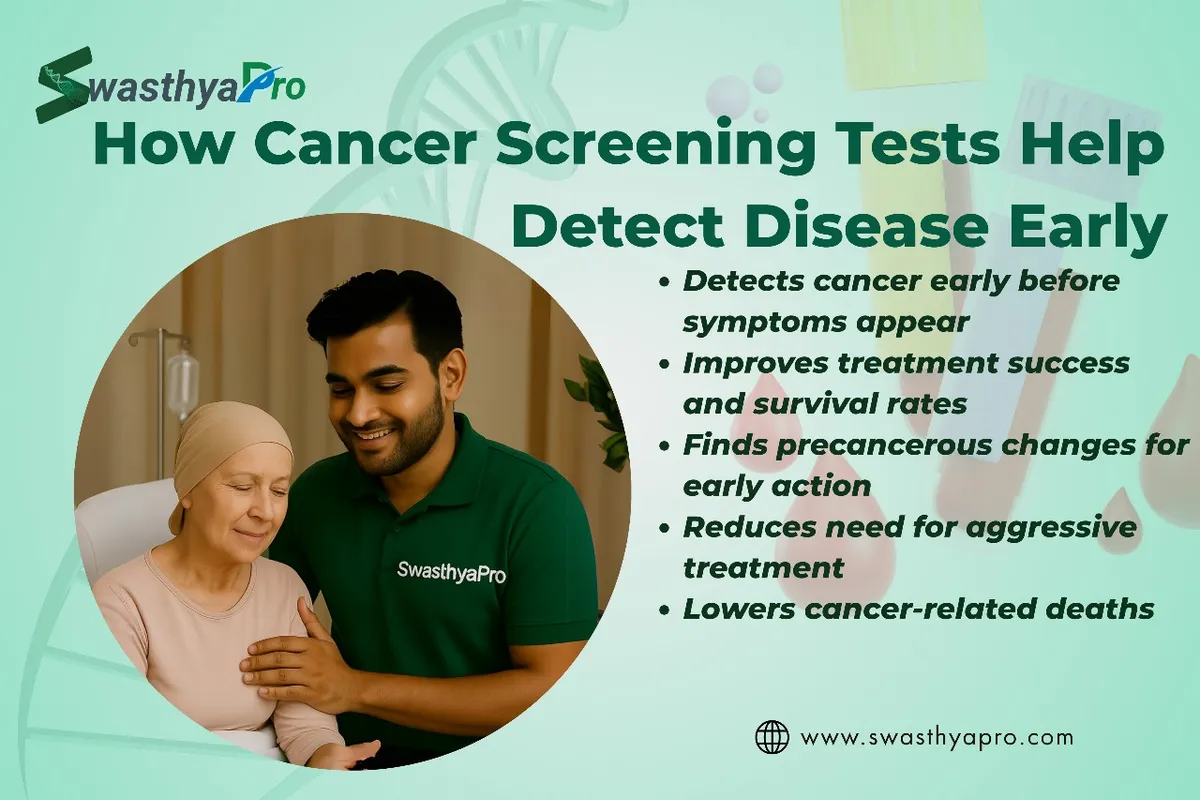Breaking myths around cancer screening test: what most people get wrong

The idea of getting a cancer screening test brings up a mix of emotions — worry, fear, confusion, and sometimes hesitation. Unfortunately, a lot of that hesitation comes from myths and misunderstandings that have been passed around for years.
The truth is, a cancer screening test is one of the simplest and smartest ways to stay ahead of serious illness. Yet many people delay or avoid it altogether because of things they’ve heard — not facts, just fears.
In this article, we’ll break down the most common myths around the cancer screening test, and share the truth you need to feel confident and clear.
Myth #1: “If I feel fine, I don’t need a test.”
✅ Truth: Most cancers don’t show symptoms in early stages.
This is one of the most dangerous assumptions people make. Many types of cancer — like breast, colon, cervical, and prostate — develop slowly and silently. By the time you feel pain, fatigue, or visible symptoms, it may already be advanced.
A cancer screening test is meant to detect issues before symptoms appear. That’s when treatment is easiest, cheapest, and most effective.
Myth #2: “A cancer screening test is only for older people.”
✅ Truth: Screening starts as early as your 20s for some cancers.
While risk does increase with age, certain screenings should begin much earlier:
- Pap smears start at 21
- HPV testing starts in your 20s
- Breast exams start by 30
- Colon screening begins at 45
- Lung and prostate tests usually begin around 50
Also, if you have a family history of cancer, your cancer screening test timeline should begin even earlier.
Myth #3: “Screening tests are painful or risky.”
✅ Truth: Most screening tests are quick, safe, and non-invasive.
Here’s what they’re really like:
- Mammogram: Mild pressure, takes 10–15 minutes
- Pap smear: A little discomfort, not pain
- Stool test: Done at home, no discomfort
- PSA blood test: Just a simple blood draw
- Low-dose CT scan: Painless imaging for lung cancer
A cancer screening test today is far less invasive than the treatment needed for late-stage cancer later.
Myth #4: “If the test is positive, that means I have cancer.”
✅ Truth: A positive result means further investigation is needed — not a diagnosis.
This is where many people panic unnecessarily. A cancer screening test simply detects abnormalities — not cancer itself.
A “positive” or “abnormal” result means:
- Something looks unusual
- It might need more testing (like biopsy or scan)
- It’s not a guarantee you have cancer
And in many cases, the follow-up tests come back clear. So don’t jump to conclusions — follow through with your doctor’s advice.
Myth #5: “Screening tests are expensive.”
✅ Truth: Most are affordable — and some are even free or discounted.
With today’s health tech, getting a cancer screening test has become easier and cheaper than ever. Many platforms offer:
- Full-body checkups with cancer markers under ₹1500
- Home sample collection
- Digital reports within 24–48 hours
- Free doctor consultations
Platforms like 1mg, Healthians, Redcliffe Labs, Apollo, and Thyrocare all provide reliable, cost-effective packages.
Myth #6: “It’s better not to know.”
✅ Truth: The earlier you know, the more options you have.
Avoiding a cancer screening test because of fear can cost you far more than a diagnosis ever will. Early detection doesn’t just improve survival — it often avoids aggressive treatments, surgeries, or lifelong health complications.
Not knowing doesn’t protect you. It delays your power to take action.
Myth #7: “Once I’ve tested negative, I don’t need to test again.”
✅ Truth: Regular screening is essential.
A clean report today doesn’t mean you’re risk-free forever. Cancer can develop over time. That’s why experts recommend testing:
- Annually for high-risk individuals
- Every 3–5 years for cervical screening
- Every 1–2 years for breast and prostate screening
- Every 10 years for colonoscopy (or annual stool test)
A cancer screening test is not a one-time event — it’s part of a lifelong prevention plan.
Final Thoughts
Myths about the cancer screening test don’t just spread confusion — they cost lives.
If there’s one thing to remember, it’s this: early detection saves lives.
You don’t have to be sick to get checked. You just have to care enough about your health, your time, your future, and your loved ones to make that appointment.
So let the myths go. Let the facts in. And let a simple cancer screening test become one of the smartest habits in your health routine.
Because clarity beats fear — every single time.